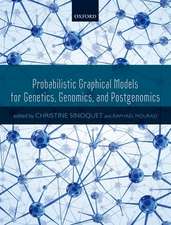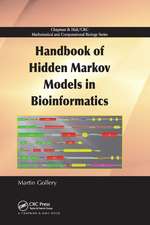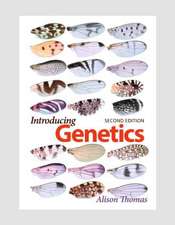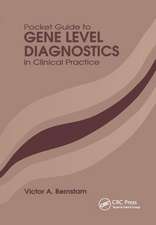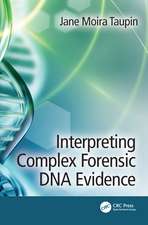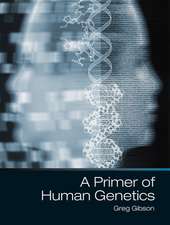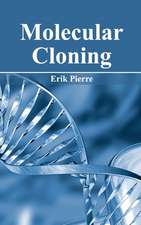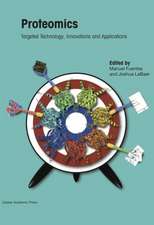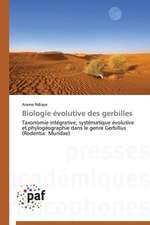Population Genomics with R
Autor Emmanuel Paradisen Limba Engleză Paperback – 13 iun 2022
The first four chapters review the basics of population genomics, data acquisition, and the use of R to store and manipulate genomic data. Chapter 5 treats the exploration of genomic data, an important issue when analysing large data sets. The other five chapters cover linkage disequilibrium, population genomic structure, geographical structure, past demographic events, and natural selection. These chapters include supervised and unsupervised methods, admixture analysis, an in-depth treatment of multivariate methods, and advice on how to handle GIS data. The analysis of natural selection, a traditional issue in evolutionary biology, has known a revival with modern population genomic data. All chapters include exercises. Supplemental materials are available on-line (http://ape-package.ird.fr/PGR.html).
| Toate formatele și edițiile | Preț | Express |
|---|---|---|
| Paperback (1) | 340.49 lei 6-8 săpt. | |
| CRC Press – 13 iun 2022 | 340.49 lei 6-8 săpt. | |
| Hardback (1) | 834.17 lei 3-5 săpt. | +28.24 lei 4-10 zile |
| CRC Press – 5 mai 2020 | 834.17 lei 3-5 săpt. | +28.24 lei 4-10 zile |
Preț: 340.49 lei
Preț vechi: 387.87 lei
-12% Nou
Puncte Express: 511
Preț estimativ în valută:
65.16€ • 67.31$ • 54.23£
65.16€ • 67.31$ • 54.23£
Carte tipărită la comandă
Livrare economică 25 martie-08 aprilie
Preluare comenzi: 021 569.72.76
Specificații
ISBN-13: 9781032336350
ISBN-10: 1032336358
Pagini: 396
Dimensiuni: 156 x 234 x 26 mm
Greutate: 0.56 kg
Ediția:1
Editura: CRC Press
Colecția Chapman and Hall/CRC
Locul publicării:Boca Raton, United States
ISBN-10: 1032336358
Pagini: 396
Dimensiuni: 156 x 234 x 26 mm
Greutate: 0.56 kg
Ediția:1
Editura: CRC Press
Colecția Chapman and Hall/CRC
Locul publicării:Boca Raton, United States
Cuprins
1. Introduction. 2. Data Acquisition. 3. Genomic Data in R. 4. Data Manipulation. 5. Data Exploration and Summaries. 6. Linkage Disequilibrium and Haplotype Structure. 7. Population Genetic Structure. 8. Geographical Structure. 9. Past Demographic Events. 10. Natural Selection.
Notă biografică
Emmanuel Paradis is senior researcher in the French Institute of Research for Development (IRD). His research focuses on evolutionary models and their applications. The development and publication of software associated to his research has been an important aspect of his activities for more than twenty years. He adopted R as his main software for data analysis in 2000 and has since published and maintained several packages, including ape since 2002 and pegas since 2009. He gives regular workshops and trainings in several countries.
Recenzii
"The author has taken good care of including several important as well as emerging topics (data acquisition, next generation sequencing) that would be extremely useful for the readers. suggest that this book be targeted to graduate students and researchers who have some background in basic genetics or are taking a graduate level population genetics course…The data acquisition chapter, descriptions of DNA sample quality, and file formats are the strengths. Case studies are very valuable and would provide more "hands-on" training on working on specific population genetics problems."
~Santhosh Girirajan, Pennsylvania State University
"The strength of those chapters is to provide a global coverage of the field of population genetics based on a broad spectrum of statistical methods. The author proposes to deal with population genetic analyses in a unified programming framework that uses specific classes of the R packages ape/pegas and adegenet, and I was impressed by the work done."
~Oliver Francois, University Grenoble Alpes
"This book could serve as both a reference book and a textbook. Population genetics, applied bioinformatics, genomics, molecular ecology, and conservation genetic classes with a lab component at both undergraduate and graduate levels could teach from this text. Graduate students and possible postdocs in evolutionary biology and applied bioinformatics could use this as a reference. Additionally, government and non-profit organizations that process genetic samples for conservation and management purposes would find this instruction useful. …What this text offers is unique in that it is focused on practical steps to analyze data using already available programs that users can install…Given the variety of subjects and types of analyses, I think it could be a valuable resource for many students."
~Sarah Hendricks, San Diego Zoo Institute for Conservation Research
~Santhosh Girirajan, Pennsylvania State University
"The strength of those chapters is to provide a global coverage of the field of population genetics based on a broad spectrum of statistical methods. The author proposes to deal with population genetic analyses in a unified programming framework that uses specific classes of the R packages ape/pegas and adegenet, and I was impressed by the work done."
~Oliver Francois, University Grenoble Alpes
"This book could serve as both a reference book and a textbook. Population genetics, applied bioinformatics, genomics, molecular ecology, and conservation genetic classes with a lab component at both undergraduate and graduate levels could teach from this text. Graduate students and possible postdocs in evolutionary biology and applied bioinformatics could use this as a reference. Additionally, government and non-profit organizations that process genetic samples for conservation and management purposes would find this instruction useful. …What this text offers is unique in that it is focused on practical steps to analyze data using already available programs that users can install…Given the variety of subjects and types of analyses, I think it could be a valuable resource for many students."
~Sarah Hendricks, San Diego Zoo Institute for Conservation Research
Descriere
This book provides a reference on modern statistical and data exploration methods for the population genomics. It covers a wide range of methods within the R computing environment. The readers will be assumed to have basic knowledge in population genetics, computational methods, and statistics, although some basic principles will be explained.

